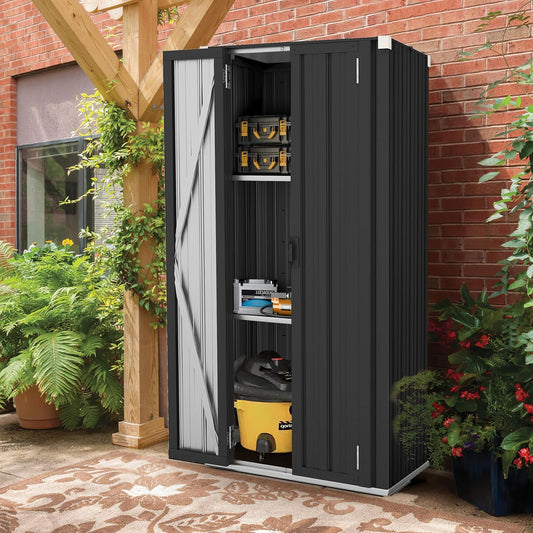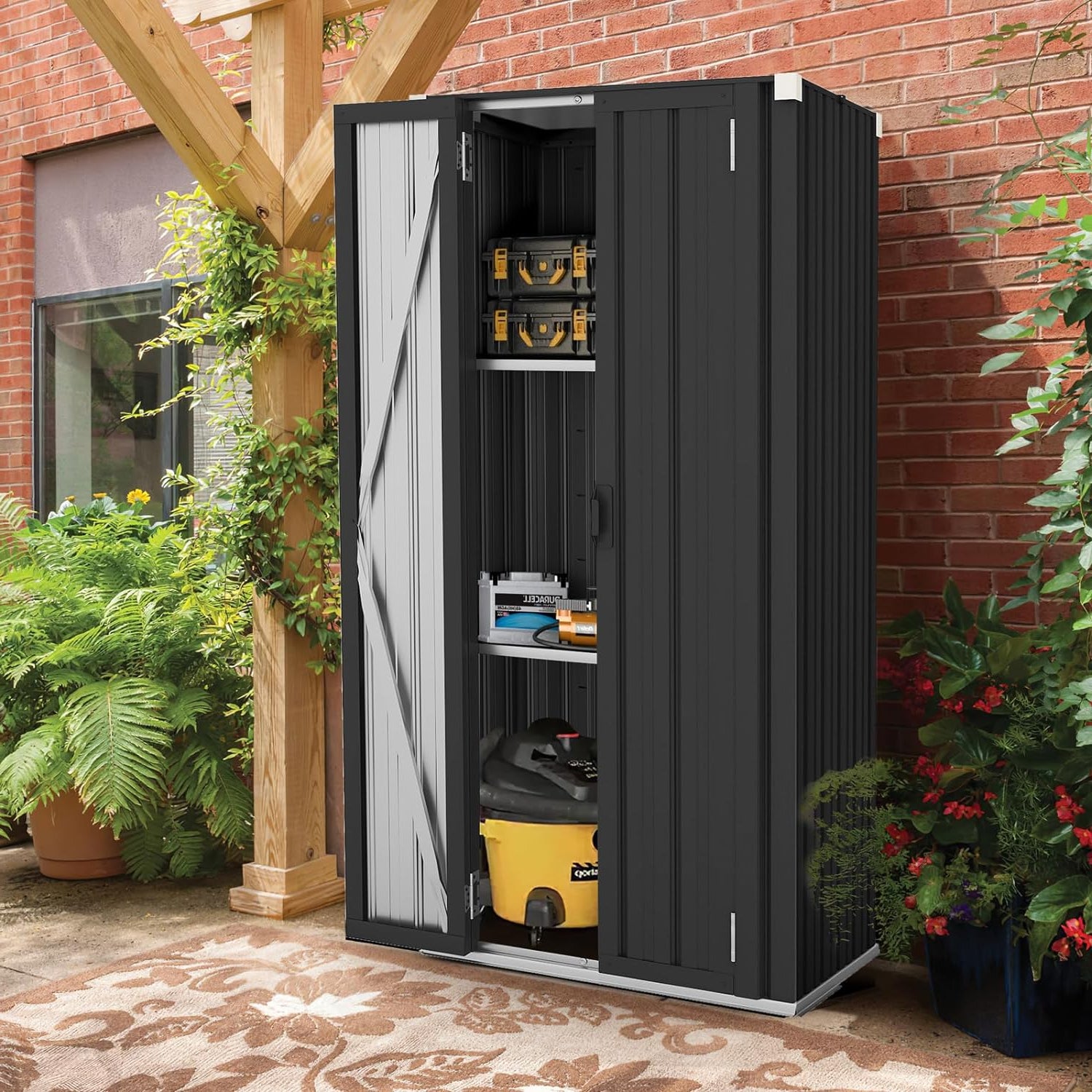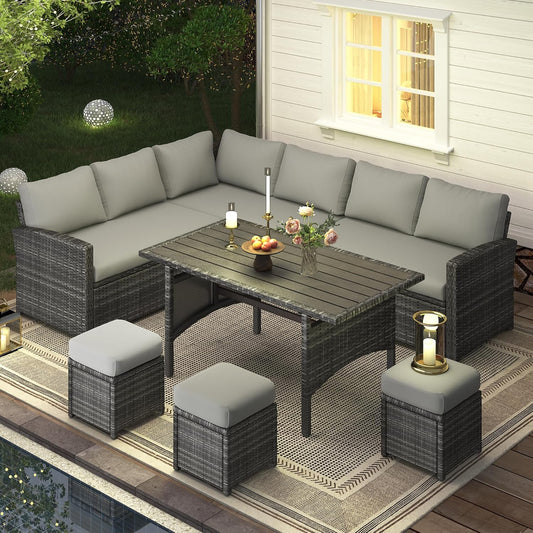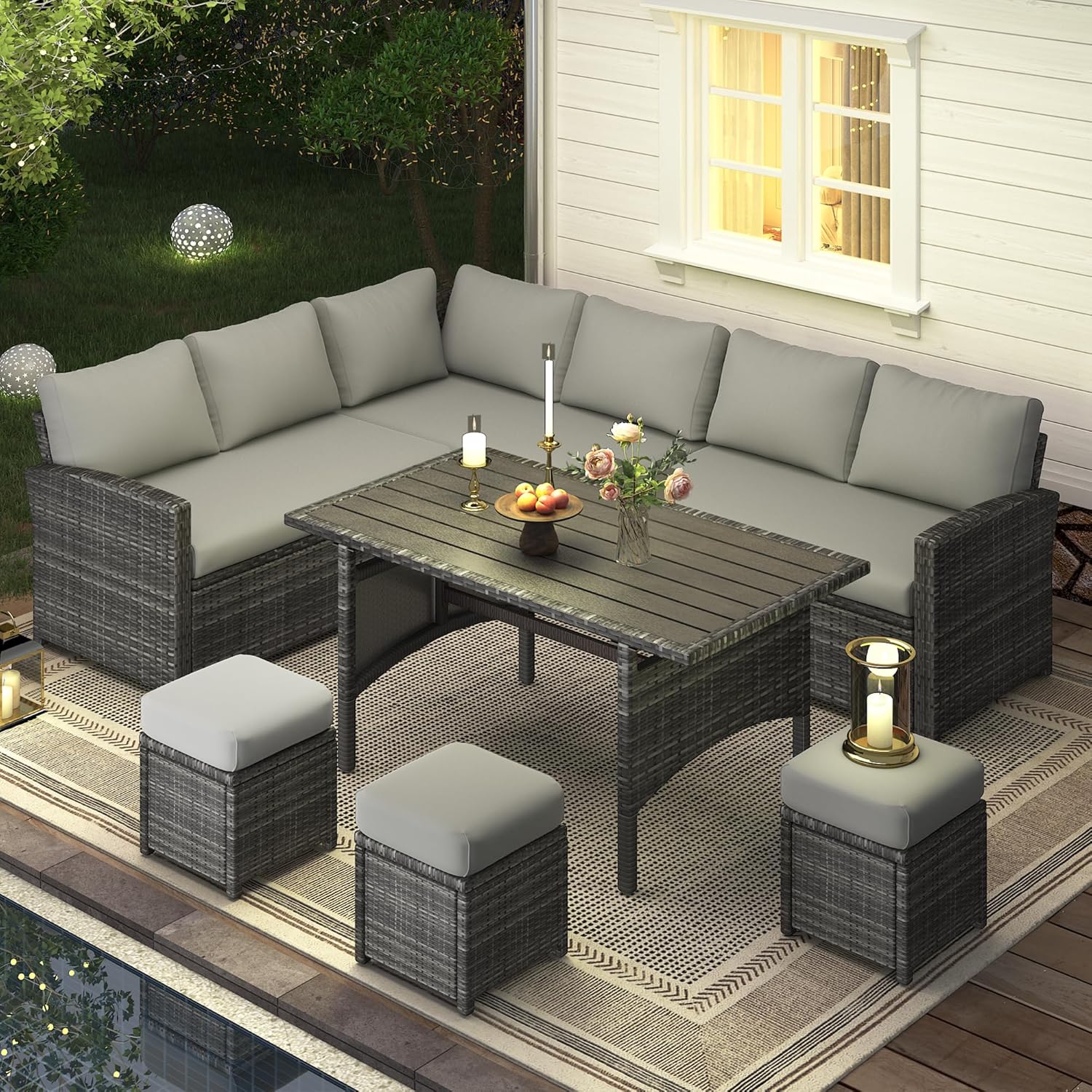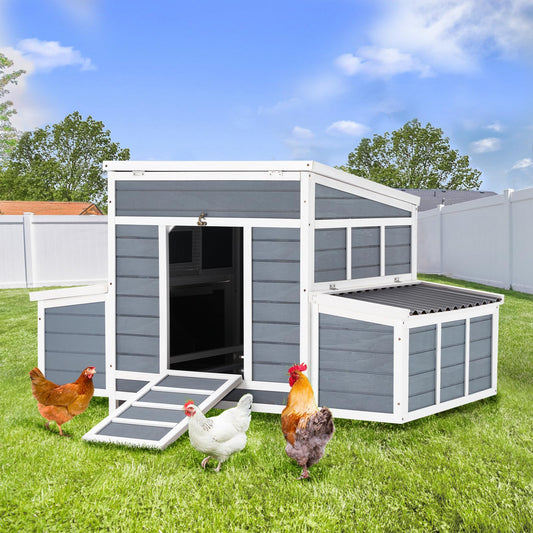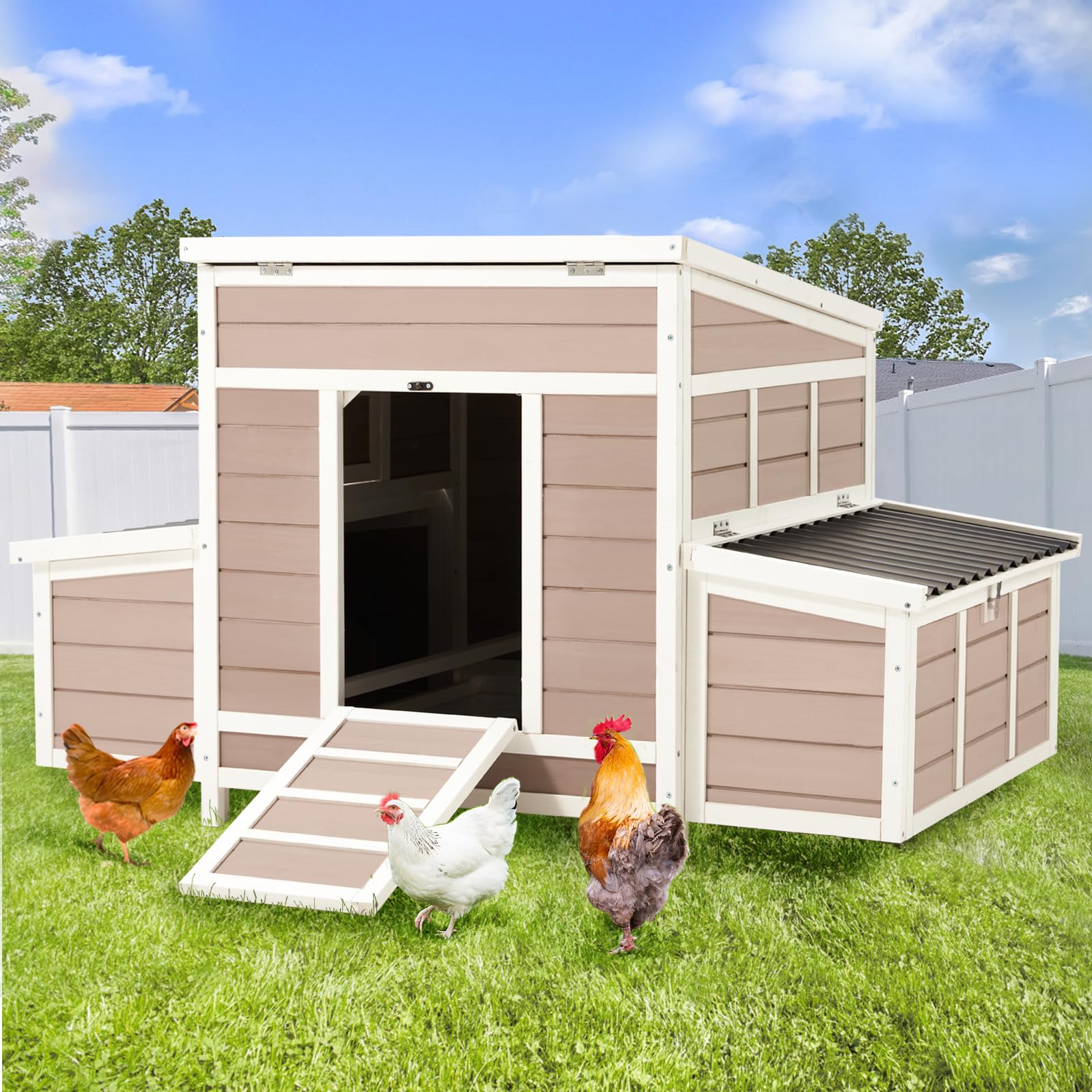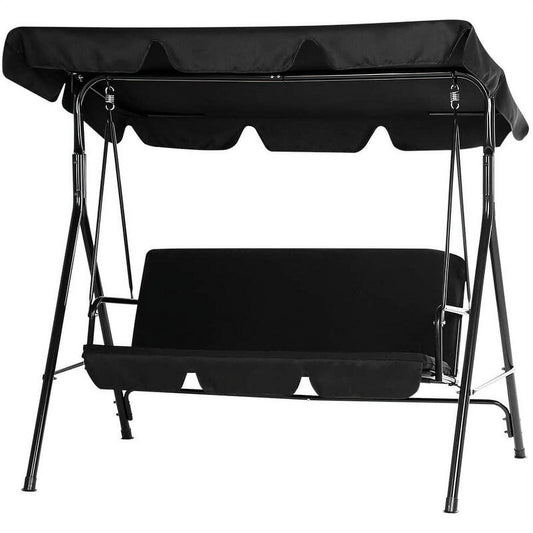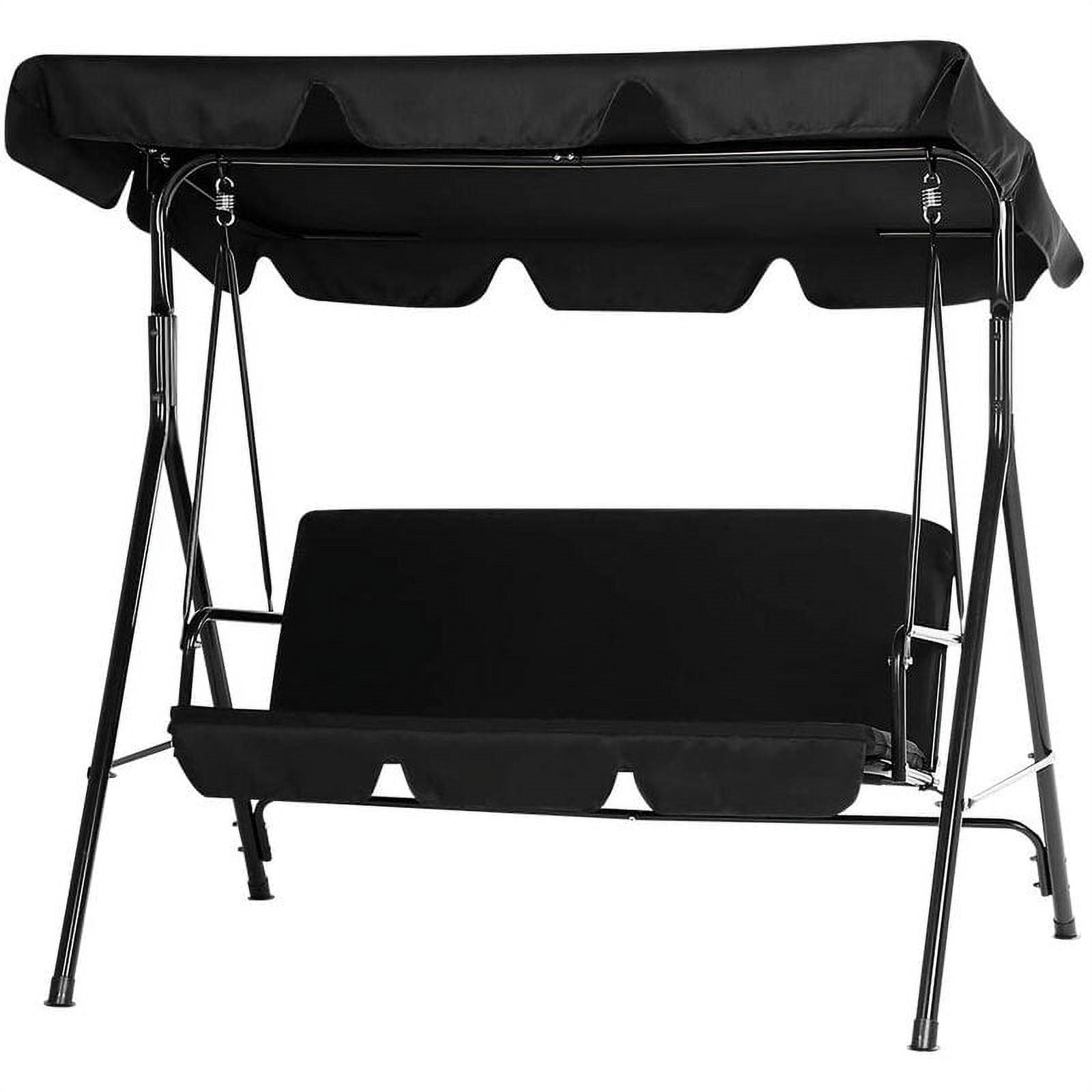Is your garage overflowing with stuff? Do you find yourself tripping on garden tools or decorations for each season? You're not alone and as a result, outdoor storage shed have never been hotter. Nowadays, outdoor storage sheds are not boring boxes no one wants in their backyard. Today’s sheds are organized, fun, and stylish allowing you to get your life in order while still looking good.
However, when it comes to picking the right shed? That's where it can get a little bit complicated. There are a lot of choices to consider - wood vs. metal, small tool shacks vs. walk-in workshops, and all the upkeep. We are going to cover everything you need to know in one perfect location. Whether you are looking for a modern aesthetic or a highly functional storage product, we will guide you to the best shed that fits your needs, your items, and your style.
Why Every Yard Needs an Outdoor Storage Shed
Let’s be honest — no one dreams of tripping over a garden hose for the third time this week, or wondering where the snow shovel disappeared this time. That’s where a storage shed comes in — your secret weapon against backyard chaos.
But here’s the real magic: an outdoor shed isn’t just a giant box with a door. It’s a versatile sidekick that can evolve with your life. Whether you’re a garden guru, a DIY tinkerer, or someone who just wants to keep holiday decorations from invading the guest bedroom, a shed gives everything a proper home.
Think about it this way — if your backyard were a movie set, your shed would be the behind-the-scenes crew keeping things running smoothly.
| Shed Function | What It Stores (and Saves Your Sanity From) |
|---|---|
| Gardening Station | Rakes, fertilizers, gloves, pots – no more muddy tools in the kitchen |
| Tool Haven | Power drills, saws, cords – finally, no more “where’s my wrench?” |
| Bike & Gear Garage | Bicycles, helmets, sports gear – and maybe the kids stop losing stuff |
| Pet Supply Corner | Feed, crates, grooming tools – out of sight, still in reach |
| Holiday Hideaway | Lights, wreaths, yard inflatables – goodbye attic chaos |
| Mini DIY Workshop | Lumber, paint, tiny bench – your creative space, no interruptions |
🧠 Pro tip: Even a smaller shed can be surprisingly roomy if you use vertical space smartly. Need inspiration? Check out the top 5 uses for a 7x3 storage shed.
So before you write off a shed as “just storage,” take a moment. What’s cluttering up your yard or home right now? Chances are, your future shed has already made room for it.

Types of Outdoor Sheds: Which One Is Right for You?
Choosing the perfect shed feels a bit like dating — you want something reliable, good-looking, and low-maintenance. Let’s break down the main “types” on the market so you can swipe right with confidence.
Metal Sheds vs. Wooden Sheds: The Classic Showdown
| Feature | Metal Sheds | Wooden Sheds |
|---|---|---|
| Durability | Tough as nails, weather-resistant, but can get hot or rusty over time | Warm, sturdy, but needs regular care to prevent rot or pests |
| Maintenance | Low maintenance, just keep an eye out for rust spots | Requires painting/staining every few years to stay sharp |
| Security | Hard to break into, great for storing valuable tools | Can be reinforced but easier to damage or break |
| Aesthetics | Sleek, modern, but some say a bit “industrial” | Classic, natural look that blends with gardens beautifully |
💡 Pro Tip: If you want the toughness of metal but hate the heat it traps inside, consider adding a small ventilation window or installing a solar-powered vent.
Resin/Plastic Sheds: The Low-Maintenance Hero
Don't like wood or the sound of metal clanging? You might find love with resin or plastic sheds. They are waterproof, fade-resistant, and practically maintenance-free. And who said your backyard has to be a dull color? They often come in fun colors!
Just a reminder: while they are great for small to medium storage needs, they may not meet your needs to store heavier tools or if you are looking for a shed with a "workshop" style.
What About Windows, Vents, and Locks?
- Windows: Do you love natural light? Having windows in your shed can make your shed feel open and bright. It also allows you to better see what you are looking for without needing a flashlight.
- Ventilation: Having proper air flow in your shed is essential when trying to avoid that dank, musty smell and keeping your tools (and you) happy.even small vents or louvered panels can help.
- Locks: Ultimately security is up to you, everyone will have different levels of risk. You might choose a simple padlock, or go with a keyed dead bolt. Whatever is your preference and budget.
For a deep dive into the nitty-gritty of metal vs. wooden sheds, check out our detailed article: 👉 Compare Metal and Wooden Sheds in Detail
What Shed Size Should You Choose?
Choosing the best size for your shed is just like picking the right shoes. You want to fit just right, with a little room for growth. There are various sizes of sheds, from the compact 6x4 types, to a 10x8 beast. Each size is optimal for its own region of the yard and your reason for storage.
Let’s break it down:
| Shed Size | Best For | Example Use Case |
|---|---|---|
| 6x4 ft | Small patios or townhomes | Garden tools, lawn mower, folding chairs |
| 7x3 ft | Narrow side yards | Bicycles, potting bench, vertical shelving |
| 8x6 ft | Medium-sized backyards | Tool chests, bins, outdoor cushions, pet supplies |
| 10x8 ft | Large yards or workshops | DIY projects, seasonal storage, ride-on mower |
If you're not certain how much space you'll actually need, try this idea: collect all the things you want to store in the shed and outline their footprint with chalk or tape in your backyard. Then add 20-30% additional space for future items, better access, or perhaps a small work space.
Still not sure? Ask yourself
- Are you just storing a few garden tools—or are you going to set up the shed as a mini DIY shop?
- Will you need extra height clearance for rakes or long-handled tools?
- Is there any likelihood you might acquire a second bike, or take up a new hobby like woodworking?
🔗 Want a complete breakdown of what each size can hold? Check out How to Choose the Best Shed Size for Your Yard
🔗 Curious about how versatile a 7x3 shed can be? Here are the Top 5 Uses for a 7x3 Storage Shed

How to Choose the Right Outdoor Storage Shed
Not all sheds are created equal—and the right one depends on more than just size. Before you click "add to cart," take a moment to think through these five key factors that can make or break your shed satisfaction:
-
Space
Measure your yard closely. Do you have room to fully open the doors? Will the shed block any windows or walkways? Also consider any local zoning or HOA restrictions on size or placement. -
Cost
Prices can range a lot, depending on materials and size and features. Metal sheds are typically less expensive than wooden sheds—they are also far less cute, and they offer limited options for customization. Plastic/resin sheds usually fall somewhere in the middle—less expensive than wood and low maintenance. -
Purpose
What will you be using the shed for? Tool and bike storage? Seasonal decor? A potting station? A mini workshop? The intended purpose will inform its size, layout, and the features it may need (windows, shelves, ventilation, etc). -
Weather
Choose a material that will hold up to your climate. If you live in a wet or humid area, get rust-resistant metals or rot-resistant wood. If you live in a snowy part of the country, look for reinforced roofs that can handle a weight. -
Style
How will shed fit in with your home? Will it complement your homes exterior or will it stand out? Will its color, design, and roof style matter? It might, especially if it will be in full view.
Quick Check: What Matters Most to You?
| Your Priority | What to Look For |
|---|---|
| Limited space | Slim or vertical sheds like 7x3 ft |
| Low maintenance | Resin or galvanized steel models |
| Style | Wooden sheds with trim details |
| Harsh climate | Waterproof roof + UV protection |
| Tight budget | Small or basic metal sheds |
Still unsure? This guide dives deeper into each factor and helps match you with the right shed for your yard and needs:
🔗 How to Choose the Right Outdoor Storage Shed
Shed Placement and Installation Tips
Before assembling your shed, it’s crucial to choose the right location and prep the ground properly—this can save you a lot of trouble down the line.
Enviable Base Preparation
First and foremost, your foundation needs to be stable and flat. Uneven or soft ground can cause the entire structure to lean or sink into the ground over time. Most sheds should be on a solid base like a concrete slab or paver pad, or gravel pad. To avoid the possibility of moisture ruining your structure, you may wish to add a vapor barrier layer or raise the base slightly so that any moisture drains away from the base.
Make Sure You Leave Room
When deciding where to place your shed, make sure that adequate room will be left around your shed for air circulation, easy access for maintenance, and clearance for the doors. Do not push your shed too close to any fences, trees or walls, and leave a minimum of 1 to 2 feet of buffer space on each side. If you plan to place the shed near your garden, also consider sunlight exposure, and how close you want your tools.
Check Local Regulations
In many regions, even small backyard storage sheds may require a building permit. For example, states like Florida typically allow sheds up to a certain size (usually 100 sq. ft or more) without a permit. However, regulations vary by county, so it's important to verify requirements before you start installation.
💡 For reference, you can check out San Francisco’s official FAQ on storage sheds exempt from permits.
Failure to obtain the proper permits could lead to fines or removal orders—so taking this step early helps avoid unnecessary costs or delays.

Maintenance Tips for a Long-Lasting Shed
A properly cared for, shed can provide you with many years of use, even in the worst outdoor conditions. The most important factor is to take care of it properly - each type of shed has its own maintenance strategy that should be followed.
For wooden sheds, inspect it on a regular basis for rot, peeling paint or termit damage. Replace the waterproof coating/conventional paint every 1-2 years. Always verify that your shed's base is well aired and the surrounding ground is well-drained, thus taking steps to avoid moisture.
For metal sheds, annually, check for rust spots and paint chips regularly, particularly, before and after the winter or wet season. If it rusts touch up with anti-rust spray or paint. If your shed has a ventilation system, ensure they are clear, condensate can cause a lot of moisture problems.
Resin and plastic sheds should generally need the least maintenance. Check and clean the panels inside and outside, and it's probably enough to do a couple of times a year (if very dirty - use a soap solution). However, if your shed has been installed in all day direct sunlight through the year, then you should check for UV damage to the panels (as well as any cracking which could be present).
Regardless of material, it’s important to perform a basic annual inspection each spring:
- Check the roof for leaks or sagging
- Confirm that door hinges and locks are not rusted
- Remove leaves or debris from around the base
- Ensure the foundation is still level and dry
To improve durability, consider placing your shed on a raised foundation or using a moisture barrier underneath. Adding ventilation or small mesh screens can also help keep pests and mold away, especially in humid climates.
👉 For more in-depth tips on seasonal care and troubleshooting, check out our guide: Top Shed Maintenance Tips to Extend the Life of Your Garden or Tool Shed
Budget and Value: What to Expect
Shed prices can vary widely depending on size, material, features, and brand. Here’s a rough breakdown to help set your expectations:
- Under $300: Small metal or resin storage units, usually under 5x3 ft. Basic protection for tools, not ideal for long-term durability.
- $300–$800: Mid-sized sheds (around 6x4 to 8x6 ft) made of galvanized steel or plastic. You’ll find better weatherproofing and ventilation here.
- $800–$1,500: Larger or more stylish sheds, often wood or higher-end resin. These may include windows, shelves, or double doors.
- $1,500 and up: Premium sheds with custom features like skylights, insulation, loft space, or full wooden panel construction—ideal for long-term use or workspace conversion.
So, what features are worth paying extra for?
- Weatherproof roofs and UV protection: Crucial for longevity in sunny or rainy climates.
- Lockable double doors: Better accessibility and added security.
- Ventilation panels: Helps prevent mold, especially in resin or metal sheds.
- Elevated floors or metal bases: Protects from ground moisture and rodents.
When it comes to buying vs. building, prefabricated sheds often offer better value for most homeowners. DIY sheds might save money on materials, but require tools, time, and carpentry skills—not to mention permits in some areas. For many, purchasing a well-designed kit ensures a quicker, safer, and more durable result.

Final Thoughts: Plan Smart, Store Smarter
When selecting a shed, it's not just the size and material of the shed to consider. Ultimately you want to understand your needs so you can make a practical and long-term decision about your shed. Whether your backyard is small or if you're planning to use the shed for multiple storage purposes, a good shed will save you time, money and a lot of hassle in the future. Go beyond thinking about just the square footage of the shed: consider where you live, the cost that you are willing to put into it, if it needs to be easy to install and how the shed is going to work for you season after season. If you find the right mix of features and value, your shed will be a long-lasting, good-looking and truly functional element to your outdoor space. Store smarter - and enjoy the benefits that go with it.















